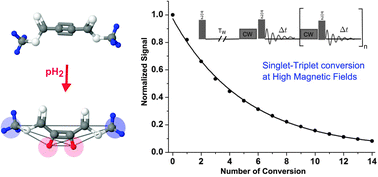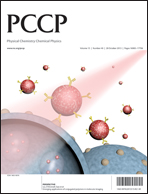Hyperpolarized 1H long lived states originating from parahydrogen accessed by rf irradiation†
Abstract
Hyperpolarization has found many applications in Nuclear Magnetic Resonance (NMR) and Magnetic Resonance Imaging (MRI). However, its usage is still limited to the observation of relatively fast processes because of its short lifetimes. This issue can be circumvented by storing the hyperpolarization in a slowly relaxing singlet state. Symmetrical molecules hyperpolarized by Parahydrogen Induced Hyperpolarization (PHIP) provide straightforward access to hyperpolarized singlet states because the initial parahydrogen singlet state is preserved at almost any magnetic field strength. In these systems, which show a remarkably long 1H singlet state lifetime of several minutes, the conversion of the NMR silent singlet state to observable magnetization is feasible due to the existence of singlet–triplet level anti-crossings. Here, we demonstrate that scaling the chemical shift Hamiltonian by rf irradiation is sufficient to transform the singlet into an observable triplet state. Moreover, because the application of one long rf pulse is only partially converting the singlet state, we developed a multiconversion sequence consisting of a train of long rf pulses resulting in successive singlet to triplet conversions. This sequence is used to measure the singlet state relaxation time in a simple way at two different magnetic fields. We show that this approach is valid for almost any magnetic field strength and can be performed even in the less homogeneous field of an MRI scanner, allowing for new applications of hyperpolarized NMR and MRI.


 Please wait while we load your content...
Please wait while we load your content...